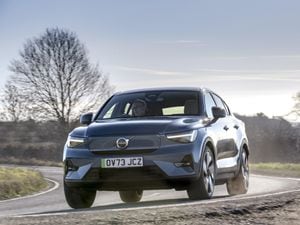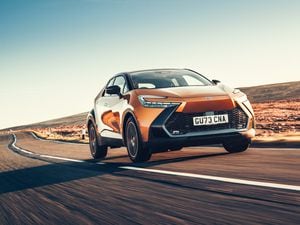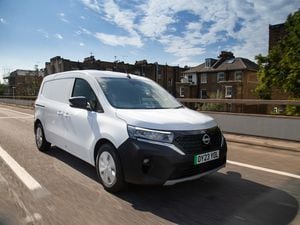First Drive: Mitsubishi’s eye-catching Eclipse Cross stands out in a crowded segment
Everyone’s doing compact SUVs these days – Mitsubishi already has several. But it’s decided to launch the Eclipse Cross to sit between its existing ASX and Outlander. Tom Wiltshire put it to the test

What is it?
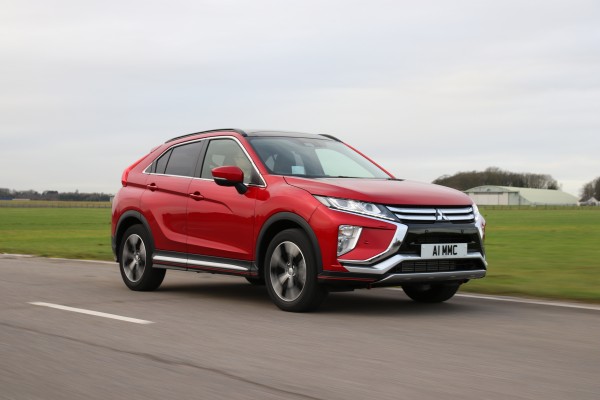
Mitsubishi is, first and foremost, a four-wheel-drive brand. Its product portfolio reflects this, with the Mirage city car a lone standout among the ASX, Outlander and Shogun SUVs plus the rugged L200 pick-up. There’s also a Shogun Sport coming later this year. But the brand has carved out some more space for yet another off-roader – the Eclipse Cross.
The Eclipse mixes bold styling with a practical interior and throws a hefty dose of value into the mix. It’s sized to compete with the best-selling family SUVs on the market – the Seat Ateca, Nissan Qashqai and Kia Sportage.
What’s new?
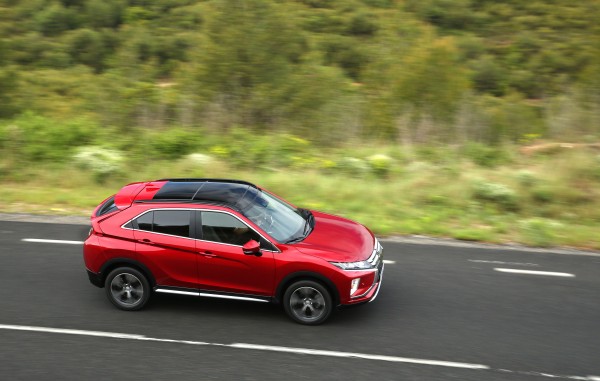
Bearing no relation to the Eclipse Coupe from the early 2000s, the Eclipse Cross sits on the same platform as the Outlander, but it’s been altered so much that Mitsubishi says they share very few components. It debuts the brand’s latest design language, with a bold face, chiselled flanks and interesting tiered rear, while under the skin sits an all-new engine and gearbox combo.
It’s the first Mitsubishi to be created wholly by the company’s current design boss, Tsunehiro Kunimoto, who was appointed in 2014. It’s also the first to be launched since the brand joined the Renault-Nissan Alliance – but this hasn’t altered its design or components in any way.
What’s under the bonnet?
Though Mitsubishi says hybrid models are on the way (as well as a diesel if public demand for the fuel stops dropping), for now the choice is simple. There’s just one 1.5-litre turbocharged petrol engine on offer. It produces 161bhp and has lots of low-down grunt, but real-world fuel economy in the mid-30s and a hefty CO2 figure of 159g/km mean you pay for the performance.
With just one engine, you only need to choose your gearbox – six-speed manual or CVT automatic. Which you prefer will depend on your driving style – the CVT improves performance and isn’t a bad example of the breed. However, it’s no match for a ‘traditional’ automatic. It keeps the revs too high for our liking, while the manual ’box allows you to surf the engine’s low-end torque for smoother progress.
What’s it like to drive?
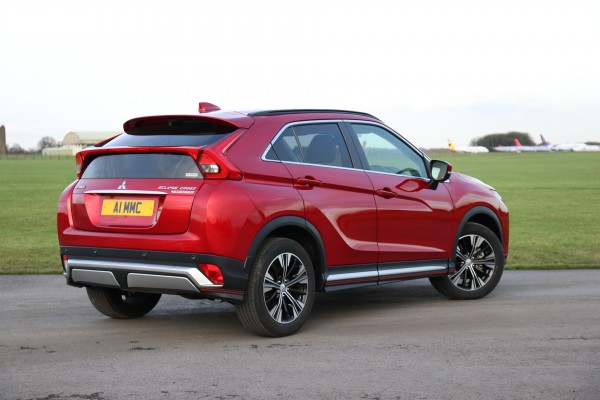
Mitsubishi has concentrated on making the Eclipse Cross a dynamic car to drive, and to an extent it’s succeeded. It’s certainly more exciting to hustle down a back road in than any of Mitsubishi’s current model line-up, but it’s not as competent as a Seat Ateca – or as comfortable as a Nissan Qashqai.
You sit higher in the Eclipse Cross than in many of its rivals, giving a commanding view of the road ahead. The view behind isn’t quite as clear though, thanks to the split tailgate glass. Mitsubishi says this decision was made to give a coupe-like roofline without sacrificing cargo space, but in reality it means the lower section (untouched by the top-hinged rear wiper) will quickly become filthy and opaque, reducing visibility.
How does it look?
The split rear window is definitely the most striking element of the Eclipse Cross’s design, and gives the car a bold tail-light graphic at night too. The rest of the car is less divisive, with chiselled flanks sitting above the black plastic wheel arch cladding so beloved by crossover designers.
Round the front, the latest development of Mitsubishi’s family face suits the car well. It looks modern and rugged without becoming a caricature of an SUV. The coupe-like upper roofline limits glass area for rear passengers, though.
What’s it like inside?
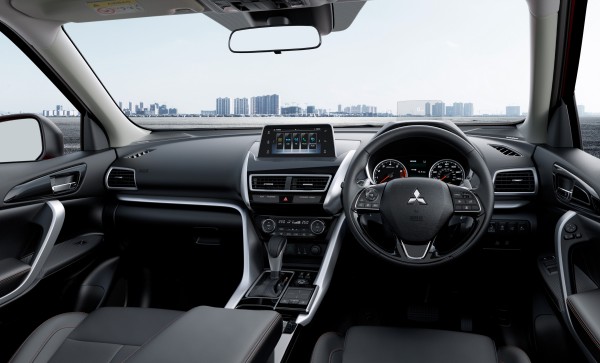
Mitsubishi says this is its best interior yet, drawing attention to the stacked layout and soft-touch plastics atop the dash. Look a little closer, though, and you soon notice cheap materials – from the textured glovebox lid to the hollow silver trim around the centre console.
The button layout is messy, with controls hidden behind the steering wheel a particular low point. The touchpad controller is an exercise in style over substance, too – it works, but it’s nothing like as effective as a simple click wheel or even directional arrows would be.
There’s good legroom for rear passengers, and the bench seat slides and reclines to balance people with luggage. The boot is a decent size too, with only slightly tight headroom spoiling the rear half of the cabin. Children might find it difficult to get a good view out of those narrow windows, though.
What’s the spec like?
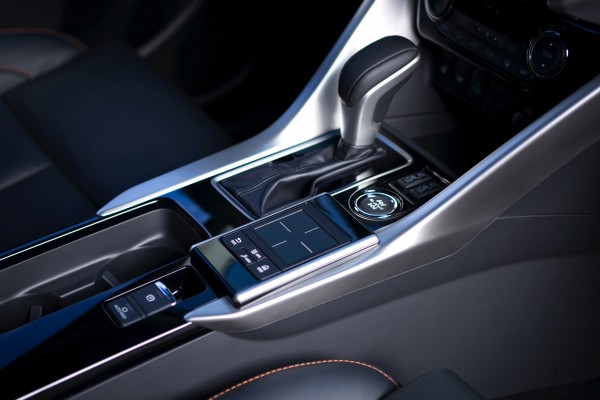
The Eclipse Cross comes loaded with equipment for the money. Entry-level ‘2’ cars have an infotainment system with Android Auto and Apple CarPlay, DAB radio, cruise and climate control, and a rear-view camera – features you’d have to pay extra for on the car’s similarly priced rivals.
‘3’ trim builds on this with 18-inch alloy wheels, a head-up display, heated front seats and keyless go, while top-spec ‘4’ models gain leather seats, a panoramic roof, LED headlamps and a suite of safety kit, including all-round cameras, adaptive cruise control and lane-change assist.
The Eclipse Cross is very reasonably priced compared with the competition, considering the powerful engine and ample equipment. Even a fully loaded 4WD automatic model is priced at well under £30,000.
Verdict
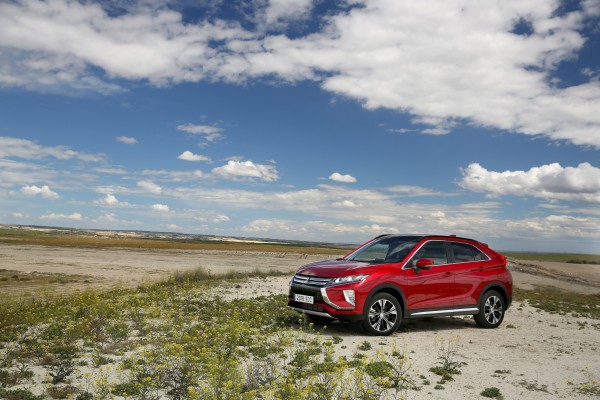
On paper, it’s hard to argue with the Mitsubishi Eclipse Cross’s generous equipment, powerful engine and bargain price tag. In the flesh it looks striking and is even quite spacious.
Rivals offer more premium interiors and more resolved powertrains, while the value proposition could quickly be snuffed out if you do high mileage, thanks to high fuel consumption. But if you’re sick of best-sellers such as the Nissan Qashqai, the Eclipse Cross might not be a bad choice.
FACTS AT A GLANCE
Model as tested: Mitsubishi Eclipse Cross First Edition 4WD Auto
Price: £29,750
Engine: 1.5-litre four-cylinder turbo petrol
Power: 161bhp
Torque: 250Nm
Max speed: 124mph
0-60mph: 9.6 seconds
Economy: 40.4mpg
Emissions: 159g/km
By Tom Wiltshire



